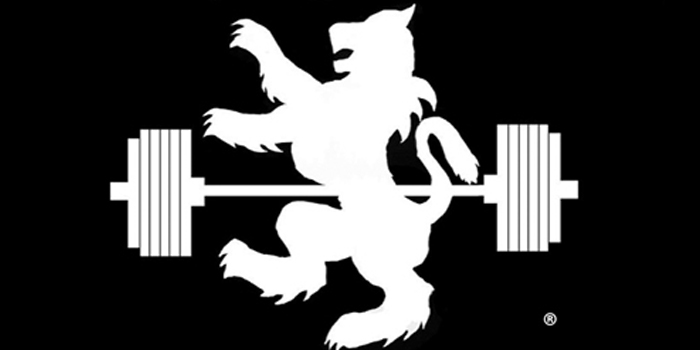
On the first of May 2020, elitefts published a piece I wrote, entitled COVID-19 and the Gym Rats. In that article, I primarily discussed the value of my home gym and its use during social distancing. I detailed a couple of different groups that reached out to me, including general friends, lacrosse players, and a variety of neighborhood teens. However, one group, in particular, has really grabbed the proverbial bull by the horns and trained with a result-producing enthusiasm, consistency, and intensity that I have not seen since my days of running the small commercial gym back in 2010.
In their late teens, these four boys included having packed-on measurable gains in a relatively short time in what should be a case study in the value of consistency.
***
My son walked into the kitchen, opened the refrigerator, and began to pile a plate with an amount of chicken breast that was supposed to last the family an entire week. He looked at me after sliding the overflowing plate into the microwave and said, “I need to feed the gains.”
RECENT: COVID-19 and the Gym Rats
“Yes,” I said. “I have noticed that your crew has packed-on a considerable amount of muscle over the last several months. How much do you think the four of you have gained in total body weight?”
He pondered for a minute while waiting for the microwave to signal its work was complete. “About sixty-five pounds.”
Sixty-five pounds? Holy crow.
These young men were undoubtedly doing some things right. They were dialed-in on their training.
Several decades ago, I purchased a book that was an anthology of John McCallum’s Strength & Health articles from the mid-60s to the early 70s – The Complete Keys to Progress. 1 I found McCallum’s writing to be both entertaining and educational. I have often thought it would be a great compliment to have my writing compared to that of this great contributor to the iron game.
Based on my brief observations of the garage training crew (and conversations with my son), these are a few of their Keys to Progress. These macro components (“the Keys”) have contributed to their above-average gains in size and strength.
Consistency
When I was a kid, I read the following exchange in Powerlifting USA Magazine, and I have never forgotten it. It is from a Paul Kelso article – “Resolutions Revisited” and was included in Kelso’s book, Powerlifting Basics, Texas-Style.2
“Tell me, Mr. Kelso, what is the most important factor in training?”
“Showing up.”
“What is the main factor for success at one’s first meet?”
“Showing up.”
“All right, but seriously, what is the secret of great overall strength?”
“Squats, maybe deadlifts.”2
First, you must show up.
These guys never miss a training session – never!
While in the middle of COVID-19 social distancing, they had virtually nothing else to do. Their choices were to sit home and watch The Flash, on Netflix – horrible, or train and build a massive amount of muscle. Also, because of the synergy they were able to foster in the gym (see below), they were extremely considerate of the other’s schedule. They were flexible enough, when possible, to ensure they were able to train together.
It was great to watch and, to be completely candid, I was jealous they had such a great crew. Their grunts and laughs echoed through the garage and into the house, where I was busy working (from home) at my desk to ensure I could pay for all the food my son was going to consume to assist with recovery following his intense efforts.
They are steady in their training, and they are also consistently consuming enough calories to support their recovery. They are handling a lot of volume and, while I continue to caution them about overtraining, I sometimes forget how adept nineteen-year-olds are at recovering from the training.
Programming
In May of 2016, elitefts published an article I wrote, entitled “Run the Plan.” The article enforced that while goals are important, they are unlikely to be achieved without the benefit of a solid plan. I mentioned that it was my experience that while many have a verbalized goal, few have a well-conceived plan in place to achieve the goal – I am not immune to this trap. Considering weight training for size and strength, the plan is in the programming.
My nineteen-year-old son has been handling the group’s percentage-based liner progression programming. He started the crew with higher volume at lighter weights, while progressively increasing the weight and decreasing the volume over nine to twelve-week cycles.
All the trainees have experienced significant gains and improvements, including considerable neuromuscular adaptation, over the last eight to nine weeks.
Their training week approximates the following:
- Monday – Bench press (Max Effort)
- Tuesday – Deadlift
- Wednesday – Close-grip Bench Press
- Thursday – Squat
- Friday – Bench press variations (reverse band bench, banded speed work, board presses, floor presses, and dead press (pin press)
- Saturday – Squat and deadlift combination (employing squat and deadlift variations – e.g., box squats and a hex-bar deadlifts
- Sunday – Rest
That is a lot of pressing!
To repeat an earlier point, I have cautioned them about overtraining. Still, it has been hard to argue with the results. They work to utilize variations of certain lifts to assist them in handing the frequency, without the corresponding overtraining effect.
Intensity
They train hard, with a liberal use of the compound multi-joint lifts – bench press, squat, and deadlift.
In my opinion, the group is continuously testing the line between training optimally and training maximally. Still, in general, they have done an admirable job maintaining a solid level of intensity. They continually push each other to train harder (see synergy) and to maximize the benefit of their time in the gym.
We are in a suburb of Dallas, Texas. The heat can be sweltering, and we are not big believers in air-conditioned gyms. This group consistently deposits puddles of sweat across the horse-stall-mat flooring.
Synergy
They push each other and there exists a sense of healthy competition.
Motivation is a powerful facet that drives significant portions of our behavior. During intense weight training, athletes are motivated by a strong desire for success, peer acceptance, and a fear of failure. My son has been able to foster productive competition in the gym. It is friendly and often unspoken, but it is pervasive. He is continually aware of how close his training peers are to his maximum lifts and whether he gains or loses ground.
The competition has forced my son to train harder, and it appears to have pushed the entire crew further. My son believes that the synergy provided by good training partners has driven him to expand his gains.
Worthwhile endeavors always require sacrifice and dedication. Extreme motivation is one of the catalysts that allow trainees to endure the discomfort of training. Some find it intrinsically; others find it extrinsically. Most recently, my son rediscovered his training motivation while training in a two-car garage in Texas. He is not ready to allow his peers to surpass his efforts without a fight.
In Conclusion
Be mindful of the macro Keys to Progress. Rediscover your motivation, increase your intensity, and consistency. Consistency is the key. Utilize the resulting drive to achieve success in all your endeavors.
References
- McCallum, J., & Strossen, R. J. (1993). The complete keys to progress. Nevada City, CA: IronMind Enterprises.
- Kelso, P. (1996). Powerlifting basics, Texas-style: The adventures of Lope Delk. Nevada City, CA: IronMind Enterprises.











Stop using these bullshit clickbait titles and mislead new people to training by giving them false expectations. This takes a lifetime to develop drug free, you have to train smart and constant to even get a chance of archiving half of your idealistic results.
Anyways, I hope the boys keep it up! Those gym friendships are great.
PS. That was absolutely over training.
For all those wondering how this magic transpired, my girlfriend moved in and heard me complain about not putting on muscle despite my time in the gym. She loved cooking and started to feed me. Half a dozen eggs and a pound of chicken breast everyday did the trick. After 30 days I asked if she would slow it down. 25 years later we still look back on that month fondly.
This was a great story Erik: thanks for sharing it.